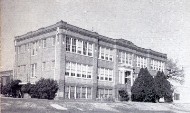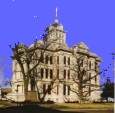Milam County Historical Commission
Milam County, Texas
Milam County, Texas






The Real-Deal Cowboys
by Patricia Benoit
Temple Daily Telegram
February 27, 2011
African-Americans played a crucial role in taming the Wild West
Whoa, pod’nah. Real cowboys can look less like Roy Rogers and more like Danny Glover in
“Lonesome Dove.”
Freed slaves helped create and then tame the Wild West and a black cowboy, a veteran of
the Texas-Kansas trails, is buried in an unmarked grave in Hillcrest Cemetery.
Not only that, a freed slave from Milam County probably wrote the best cowboy song of
all - “Goodbye Old Paint.”
The term “cowboy” was found in the English language by 1725; some say it was a direct
translation of the Spanish word vaquero.
However, Sara Massey in her book “Black Cowboys of Texas” (Texas A&M Press, 2000)
posits a different origin.
Reaching back into 19-century writings and folklore, she suggests that the name
“cowboy” may have actually entered common usage during antebellum days among slave
owners. “Boy” was a frequent term referring to grown black males. Thus, a grown slave
would be called “house-boy.” “Cow-boy” referred to those who tended livestock. In the
late 1860s and early 1870s, freed slaves began working on the trail drives. “Cow-boy”
was quickly accepted for all drovers.
No matter the name’s origins, black cowboys’ jobs were essential to the success of
Texas’ cattle industry.
During the Confederate years, Texas Gov. Francis Lubbock viewed the use of whites in
cattle driving as wasteful; thus, he encouraged their replacement with slaves to
increase enlistment. This gave slaves increased incentive and skills to stick with
herding. Significant numbers of African-Americans went on the great cattle drives
originating in the Southwest in the late 1800s.
“New studies show the largest numbers of African-Americans herding cattle worked in
Texas — one-third of all black cowboys in 1890 and two-thirds in 1910,” said Alwyn
Barr, a Texas Tech history professor who specializes in African-American studies.
“Their jobs ranged from breaking wild horses to serving as cooks. Life on ranches and
drives seemed to involve less discrimination than in more settled areas. Yet blacks
seldom became foremen, although a few rose to be trail bosses.”
A rare exception to this was Ellis Miller who died in December 1935 in Temple. Unusual
for the Jim Crow times, the Temple Daily Telegram gave him a two-column obituary at the
top of the page. The Telegram described him a “slavetime Negro,” more than 100 years
old and well-liked in the community.
Before he moved to Temple in about 1910, Miller joined the earliest trail rides in
1870-71, becoming such a trusted employee for his cattleman boss that he was allowed to
handle financial arrangements.
Miller’s Temple employers thought so highly of him that they buried him with their
family in what was then an all-white section of Hillcrest. Miller is mentioned in
Massey’s book, “Black Cowboys of Texas,” but his grave is still unmarked.
Texas’ black cowboys helped to define and refine cowboys’ mythic images for
generations. Milam County’s Charley Willis is a good example.
Born as a slave in Milam County in 1850, Willis went to work on the Morris Ranch near
Bartlett after emancipation. There he spent the next 20 years off and on, breaking
horses and doing any other necessary cow punching. In 1871, at age 21, he rode with one
of 10 herds driven north to Wyoming from Georgetown - a 2,000-mile horseback trip. That
year, more than 600,000 head of cattle marched northward from Texas.
Any good cattleman knew that longhorns are quick to stampede unless within earshot of a
human voice. So, drivers would “sing” to their herds to calm them.
“Some trail bosses didn’t like to hire a fellow who couldn’t sing,” wrote Wayne Gard in
“The Chisholm Trail” (Univers ity of Oklahoma Press, 1954). “We boys would consider it
a dull day’s drive if we didn’t add at least one verse. On bad, dark nights the cowboy
who could keep up the most racket was the pet of the bunch.”
Willis returned to Texas, singing trail tunes, especially the oldest traceable version
of the song “Goodbye Old Paint.”
Family tradition suggests that he wrote the song. It’s possible.
Sometime around 1885, Willis taught the song to Bartlett ranch hand Jesse Morris,
adding a mouth harp accompaniment. Morris became quite an accomplished musician, even
though he continued working on ranches throughout Texas.
Willis and his family finally settled in Davilla in Milam County, where he died and is
buried.
Others copied, revised and rearranged “Old Paint” over the years, few aware of its
origins. Morris throughout his life gave unwavering credit to Willis.
In 1942, folk music collector John Lomax recorded Morris’ performance for the Library
of Congress Archive of Folk Song. Later released on the Archive of Folk Culture album
“Cowboy Songs, Ballads, and Cattle Calls from Texas,” the song epitomized the long days
and lonesome nights of the cattle trails.
The rest was cowboy music history.
All articles from the Temple Daily Telegram are published with the permission of the
Temple Daily Telegram.
All credit for this article goes to
Patricia Benoit and the Temple Daily Telegram
Temple Daily Telegram.
All credit for this article goes to
Patricia Benoit and the Temple Daily Telegram

Charlie Willis and his wife, Laura, settled in Davilla in Milam County. Born a slave in 1850, Willis started working cattle in Bartlett, soon joining cattle drives in the 1870s. Willis is credited with the classic cowboy song "Goodbye Old Paint".
.
.